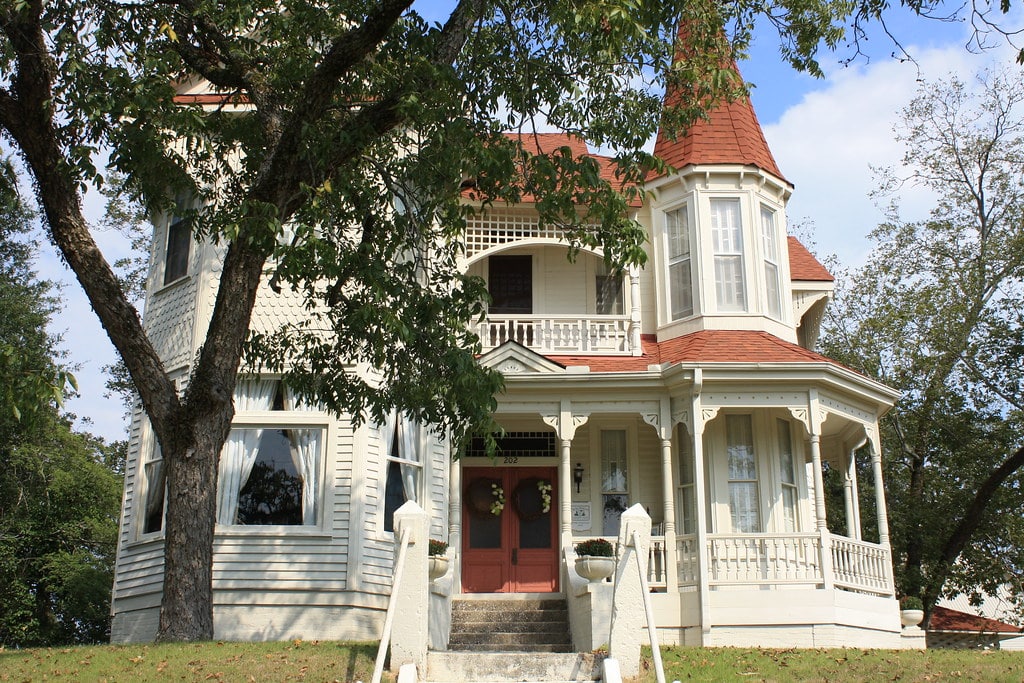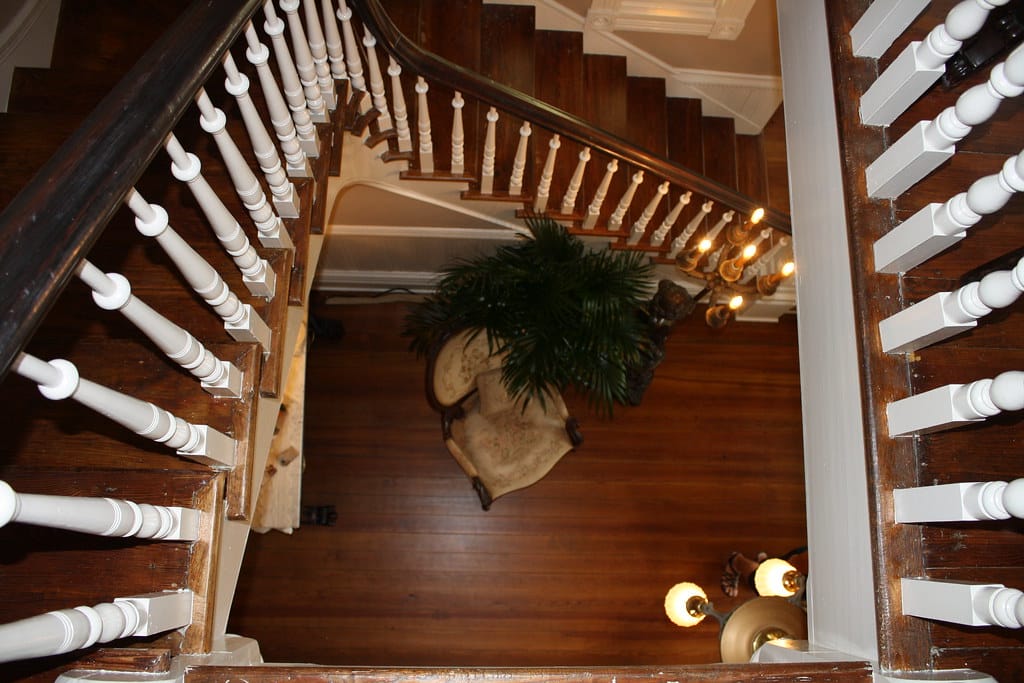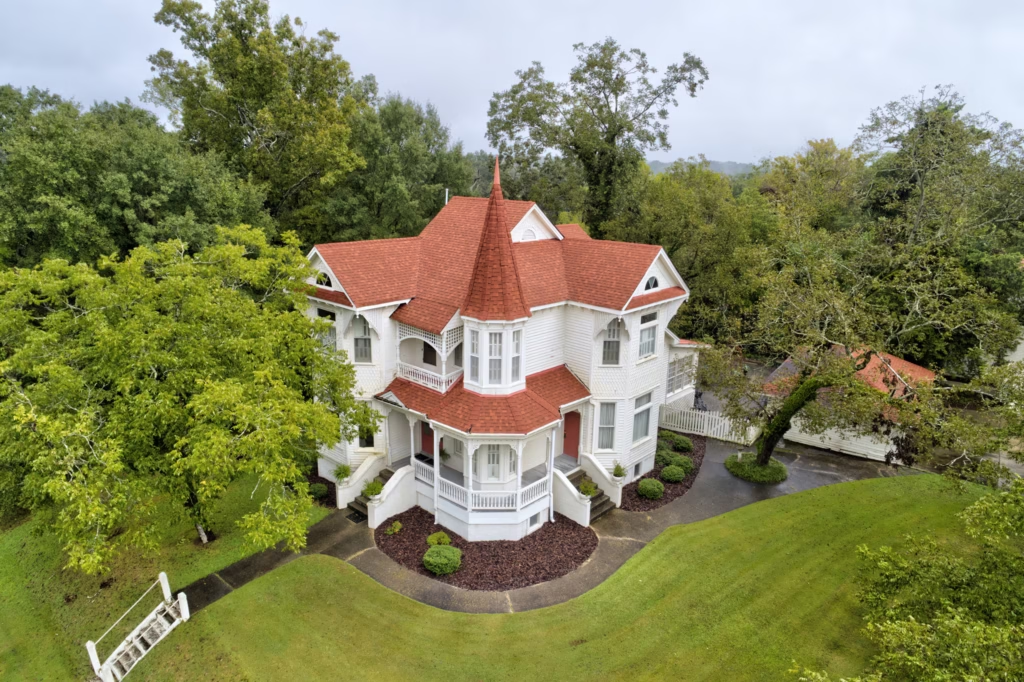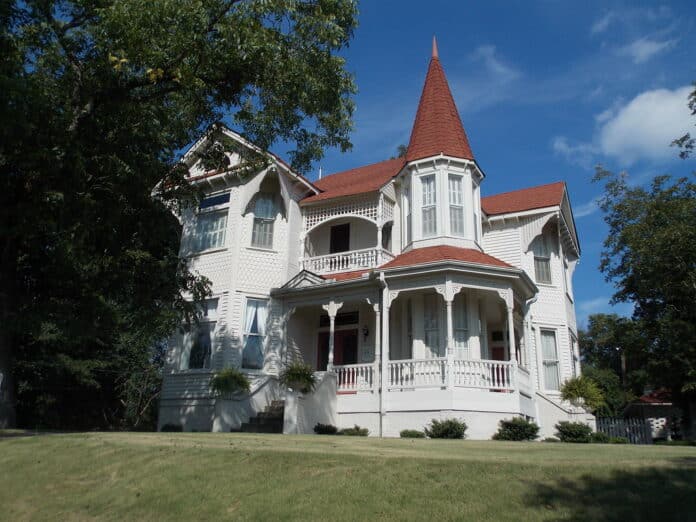The Reid‑Brake Home is a stunning example of Queen Anne–style Victorian architecture, built in 1887 by merchant Jeremiah L. Brake. Characteristic features include a steeply pitched roof, prominent turret, sweeping wrap‑around porches, decorative gables, and varied textures that exemplify the exuberance of the period.

🛋️ Interior
Inside, the house originally boasted 10 rooms, with soaring 12‑foot ceilings. Notable details include stained‑glass windows, seven fireplaces, an eye‑catching curved staircase, and rich original woodwork—doorknobs, light fixtures, moldings—that reflect fine craftsmanship. Modern-day photos and visitor accounts confirm the interiors are “really beautiful”.

📍 Location
Nestled at 202 Brake Street (corner of 2nd Street East) in the heart of Warrior, Alabama, the home occupies roughly four historic lots—about 1.5 acres. The area is residential but close to Birmingham and Cullman, enhancing both its historic charm and accessibility.

🌳 Grounds
Originally accented by the turreted main house and a carriage house, the property offered enough space for carriage access and functional outbuildings. By the late 20th century, the carriage house was gone, replaced in 2007 by a 2,000‑sq‑ft chapel. The grounds also feature multiple courtyards and gardens, making it ideal for events like garden parties and wedding expos.
📜 History
Built in 1887 by local merchant and mayor Jeremiah Brake
Key community figure: owned a store and livery stable, served as mayor in 1896
Purchased in 1996 by Bill and Pat Reid, who began a meticulous restoration project in 2007, preserving period detail.
Chapel addition allowed expanded public use; daughter Rhonda Hodo hosted bridal expos, the house becoming known as the Reid‑Brake House.
In March 2021, the property sold to Youth Force Ministries Church International for use as a parsonage, reflecting its evolving role in the community.
🛡️ Preservation
The Reid‑Brake House is a prime example of historic preservation: the Reids’ restoration underscored the importance of retaining original features—from stained glass to woodwork. Adaptive reuse through event hosting allowed public access and sustainable upkeep, while the chapel addition was sensitively integrated on the carriage‑house site Facebook. Its 2021 sale to a church ensures continued care and relevance, helping it remain a living historic treasure rather than falling into disuse.
